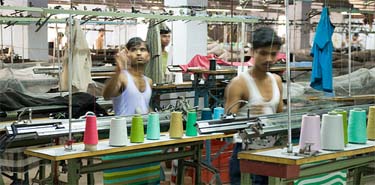Following liberalization in 1991, India’s share has been stuck at around 1.3 per cent of global exports. China’s share has increased from 1978, when their reforms started, until the end of 2008. Therefore, the first element in adopting a new approach would be to jettison the practice of expressing our export targets in absolute terms ($ billion) and state it in terms of raising India’s share in global exports in the next 5 or 10 years. My suggestion is to give ourselves an ambitious, yet eminently achievable target of doubling our export share every five years. That this can be achieved is shown by China having raised their exports of merchandise exports from $593,326 in 2004 to $ 1,428,488 in 2008.
To achieve this target, we will have to adopt a far more focused approach to our export promotion measures. We will have to shift our current reliance on fiscal sops to actually attack the structural impediments that shackle our exporting community. A simple exercise shows that the top 20 product categories account for 80 per cent of our total exports and 60 products account for almost 99 per cent. We must ensure that our policy attention and export promotion measures are strongly biased in favour of these 20 product categories so that we can build a real global presence based on our competitive advantage.
Similarly, it emerges that Asia’s share in our total exports has risen from 22.5 per cent in January 2006, to 26.4 per cent in January 2009. This is the sharpest increase compared with any other region. The EU’s share has also increased, though not as much. We have to make sure that our promotion efforts in terms of regional offices, presence of commercial counsellors and so on is directed more to Asia and that we move purposively to finalise the FTA with the EU, which is already in the works.
It is worrisome that the growth rate of our software exports, which was as high as 38 per cent in 2005-06, has been consistently slowing down in the past four years, even before the onset of the global crisis. It came down to less than 20 per cent in 2008-09 and is likely to be in single digits in 2009. As an innovation, the Minister of Commerce, in consultation with his Cabinet colleagues, will do well to include issues in growth of our remittances and tourism within the purview of the medium term FTP.
Remittances and tourism are strongly and obviously labour intensive and also improve regional equity. Both the slowdown in software and other service exports, including tourism, and the virtual stagnation in the global share of our merchandise exports, requires that we make an urgent and determined effort to address the critical supply side constraints, which are the principal reason for our rather poor export performance. These include the inevitable infrastructure bottlenecks, especially power availability, access to adequate commercial credit for the small and medium exporter, skill shortages and the all-pervasive Inspector Babu Raj. These are real problems and nothing will be gained by simply ignoring them on grounds that these are inherent in our democratic system and so nothing can be done about them. In this case, we might as well give up our attempts at formulating long-term policies for any sector.
To this list we should add the relatively high level of transaction costs that exporters have to bear in complying with procedural requirements and securing fiscal and other benefits due to them. A recent survey of 400 exporting firms as a part of a study showed that up to 20 per cent of exporters do not avail of export incentives due to the hassles involved and more than 50 per cent admitted to having had to incur some expenditure to avail the benefits under various schemes. This calls for a thorough review of the export promotion scheme, with a view to rationalising and simplifying them and making them sharply focused.
This must be done in a timely manner and undertaken with no preconceptions, rather than on the basis of demonstrated efficacy of particular measures. We often tend to become self-congratulatory on India’s low level of dependence on external demand. This is self-defeating simply because a poor economy like ours, with such vast unemployed human resources, would benefit from expanding its share in global exports. These are employment intensive and have significant multiplier effects. It is time we finally gave up our export pessimism and use the positive global sentiment about India to our advantage.

